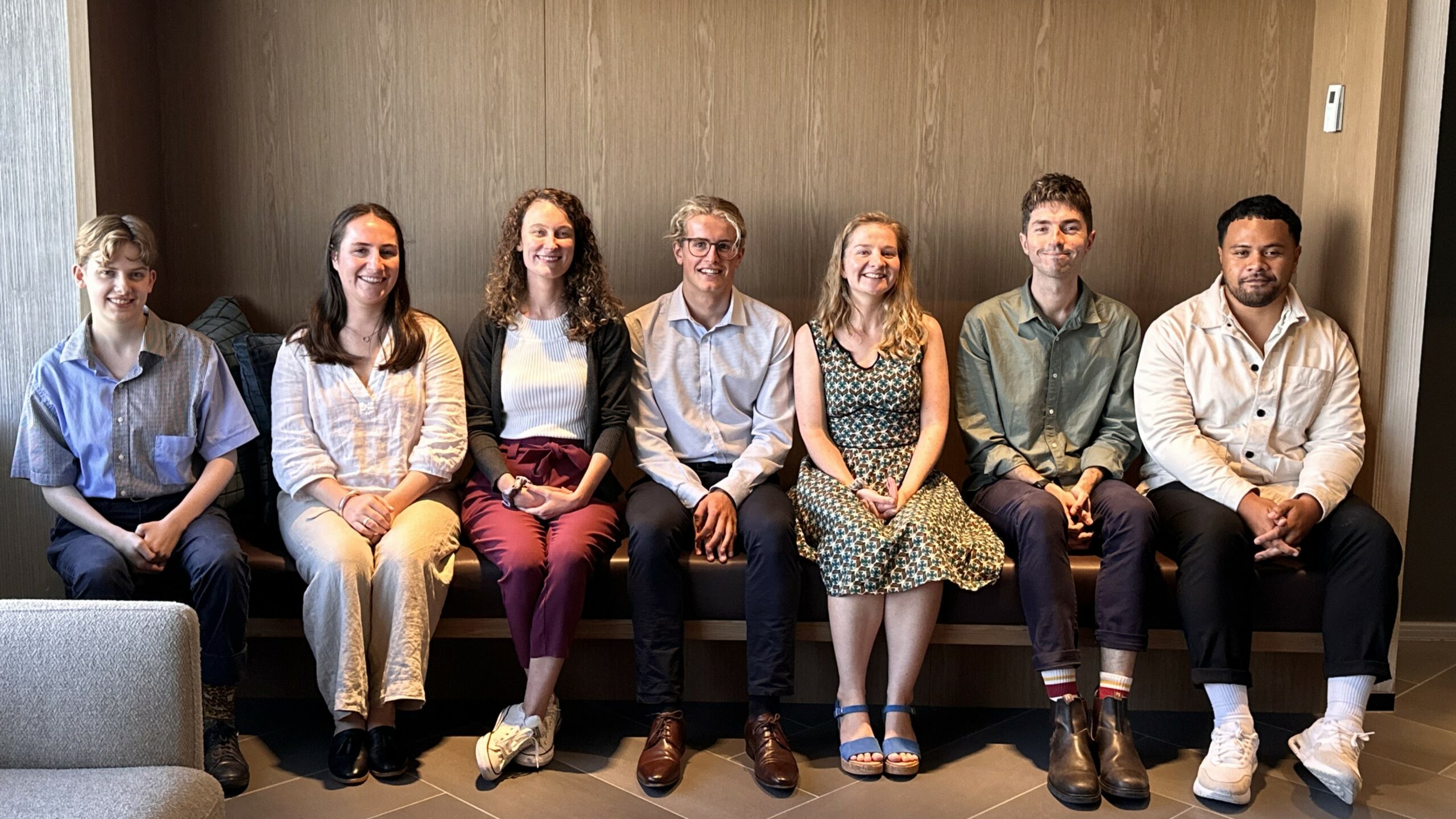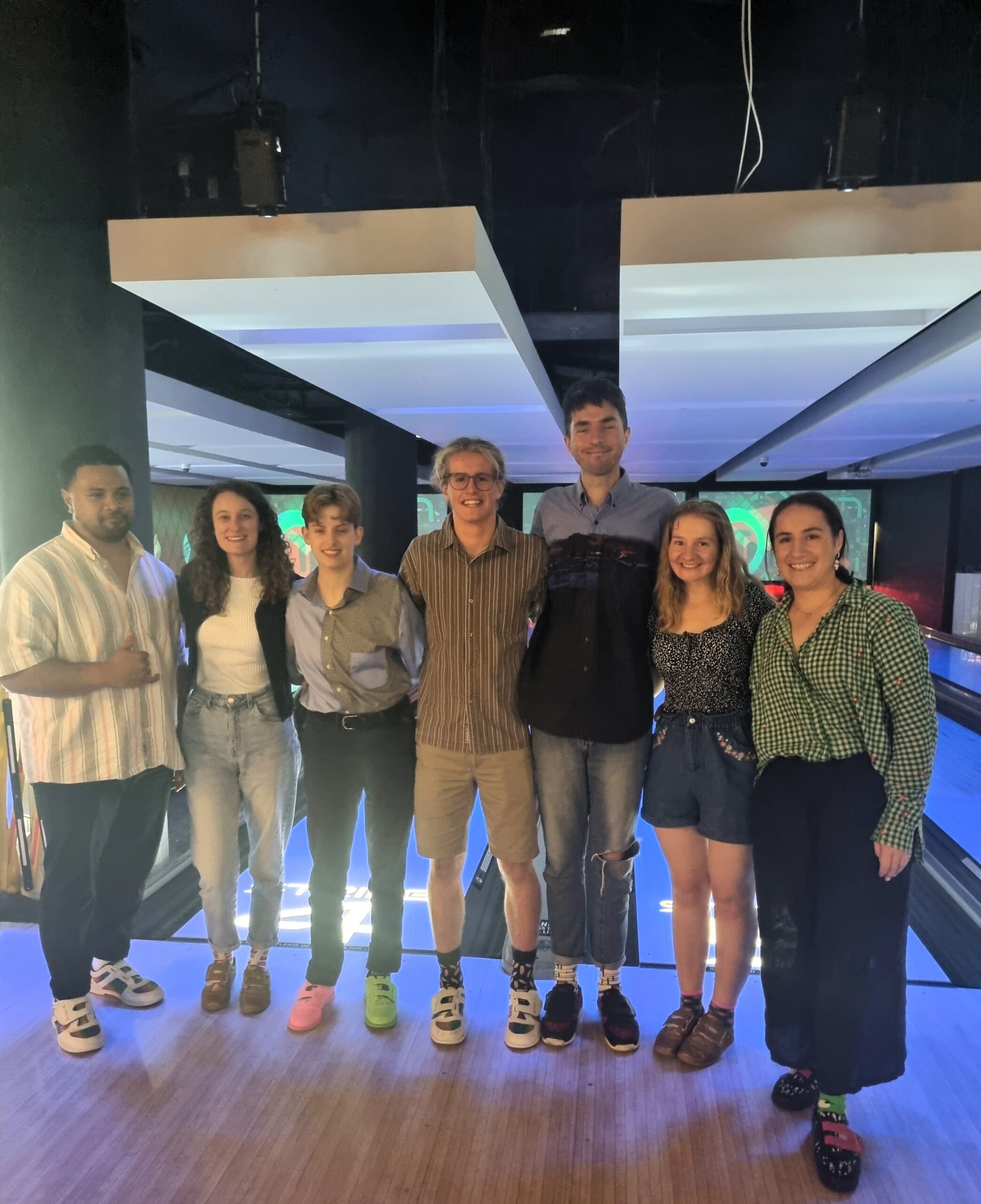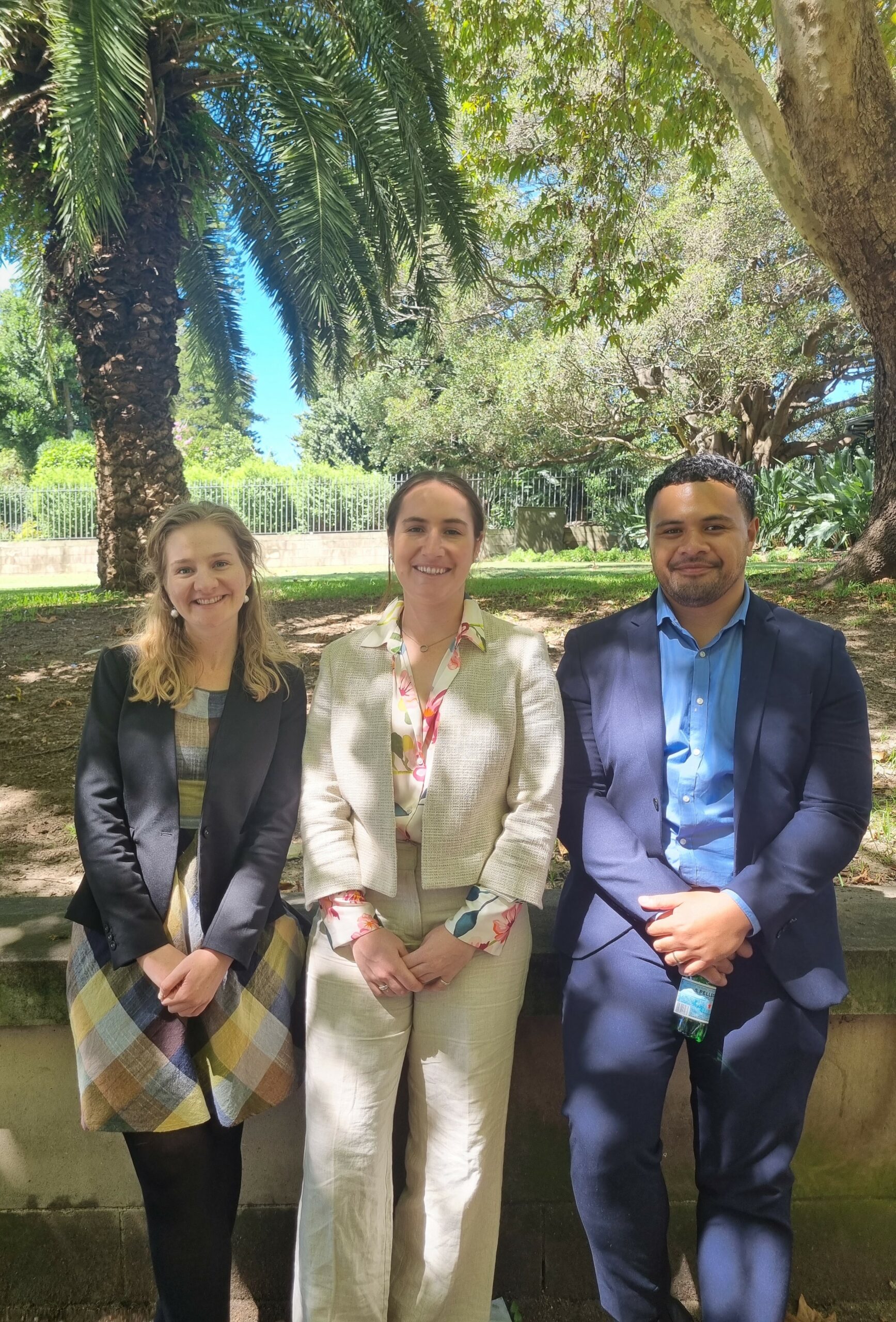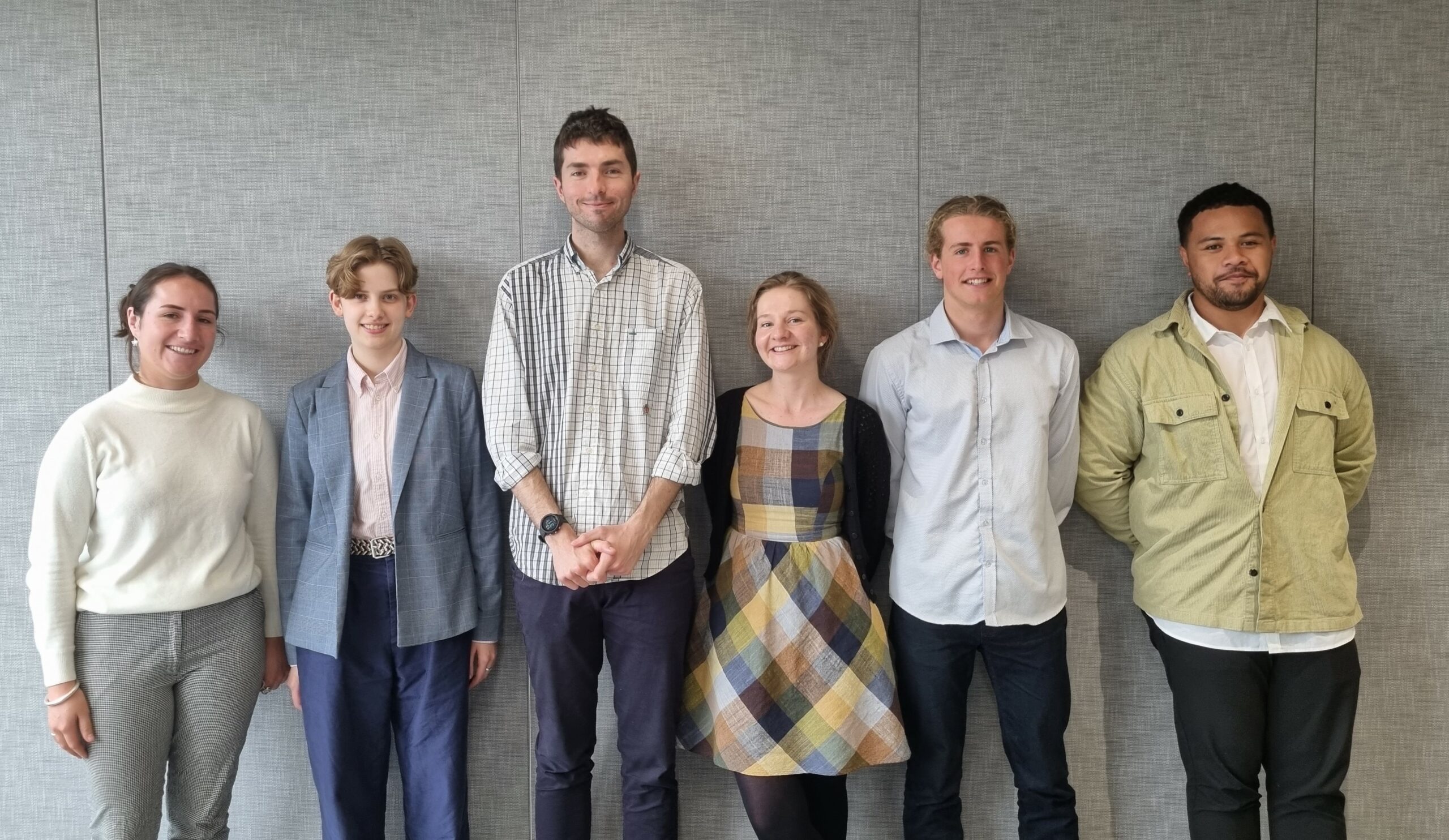News
Two Years of the VFFF Youth Advisory Group

“Being a member of the YAG has been a very rewarding opportunity to experience philanthropy in action and learn about the great ideas and programs being created to back young people in rural and regional communities. Over the two years, I have made close connections with a passionate group of young people, and developed my professional skills and confidence.” Charlotte Watson - Youth Advisory Group member
Setting up the YAG
Over 60 years of grant making taught VFFF the value of engaging directly with communities to understand how our funding can best support them. So when VFFF launched the Backing Young People strategy, we developed our first ever Youth Advisory Group (YAG) – a group of young people who guide our decision-making and inform our work.
In early 2022, we began developing the YAG with three guiding principles in mind:
1. Members should be compensated for their time and insights.
2. VFFF should build the YAG’s capacity as advisors, for example through regular professional development sessions.
3. The YAG should have a clear role and set responsibilities, recognising that over-promising input without the structures in place to respond can be disempowering.
VFFF opened applications for the group to young people from across Australia. In line with the Foundation’s long-held focus on rural and regional communities, we required all members to be connected to or living in regional Australia. The recruitment process led us to seven incredible young people – Andrew Taukolo, Charlotte Watson, Elise Lane, Florance McGufficke, Harrison Garlick, James Atkinson, and Stephanie Pearson. They were inducted as formal YAG members, and casual employees of VFFF, in July 2022.

The YAG's role
In line with our principle of providing the YAG with a clear role, the group initially focused on shortlisting VFFF’s Backing the Future grants and providing their feedback on each shortlisted application. The shortlist and associated commentary would then be passed onto the VFFF Grants Committee, who held responsibility for picking the final grant recipients.
YAG members were not expected to be philanthropic experts, and we instead asked them to perform a ‘youth pub test’ – providing their perspective on grant requests as young people. We asked them – is this idea compelling to you? Would your friends want to get involved? What could be the hurdles for young people’s participation?
To facilitate a robust discussion, we asked the YAG to meet in person in Sydney for two shortlisting rounds per year. These touchpoints also served as an opportunity for professional development, including Q&As with a young CEO and a young non-profit Board Director, and social activities, like bowling and trivia. Online meetings in between face-to-face engagements were an opportunity for VFFF to provide support, and for the group to strengthen connections and share feedback on their experiences with the team. VFFF aimed to casually check in with each YAG member at least once a month.
As the YAG became more familiar with VFFF and each other, we provided new opportunities for members to influence the Foundation’s work. This included:
- discussing the evolving needs and priorities of young people with the VFFF team to inform the Backing Young People strategy. Members would often unpack how they were experiencing VFFF focus areas in their own lives, for example their changing conceptions of Decent Work or the barriers to and benefits of Contributing to Society;
- providing input on prospective VFFF grant partners and funding proposals;
- advising VFFF on how to ensure our work is accessible for and appealing to young people, for example our approach to external communication including Backing the Future grant promotion;
- sharing feedback on VFFF projects, like our approach to impact measurement and youth participation framework; and
- meeting with the VFFF Board, Grants Committee, and VFFF members to offer their insights on the Backing Young People strategy.

So... what did we learn?
At the conclusion of a jampacked two-year term, we brought the YAG together to reflect on their experience. This was also an important opportunity for the team to pause and consider the impact of the inaugural Youth Advisory Group on VFFF. Some of our advice and reflections are outlined below.
- Create a set of shared values from the outset
At the YAG’s induction meeting, the VFFF team facilitated a value-setting exercise where the group agreed on a list of principles to guide their engagement with the Foundation and each other. This included kindness, constructive honesty, and a commitment to learning from and with each other. We returned to these principles at the start of subsequent meetings to reiterate the group’s commitment to a positive working culture. When reflecting on their experience, the YAG agreed that building their own set of values enabled them to start the process on the same page and develop a group dynamic that carried them through their two-year term.
- Start slowly and deliberately to ensure young people have genuine input
When developing the YAG, it was tempting to involve this incredible group of young people in every part of the Foundation’s work. However, having never delivered such an initiative before, neither VFFF nor our YAG members were ready for this. Establishing a clear role for the YAG ensured we could spend time building members’ capacity as advisors to VFFF, while also developing systems and processes to enable the YAG to meaningfully contribute to our work more broadly. A focus on starting well meant that both parties were ready and prepared for the YAG’s role to grow and evolve over time.
- Young people are not a homogenous group – recognise their individuality as a strength
Young people are often referred to as one category, which can fail to recognise how other aspects of their life and identity intersect to shape their experiences. Learning to understand each YAG member as both a part of the group and as their own individual person enabled us to understand how they could each best contribute. This required building one-on-one relationships with each member outside of formal meetings. The outcome was robust discussion that became more representative of the true diversity of Australia’s young people.
Reflecting on their two-year term, several members commented that the YAG experience helped them value their perspectives both as young people and as individuals with a range of different skills and ideas to contribute to the impact space. Building a diverse group also provides countless opportunities for different members to learn from one another and build new skillsets through peer-to-peer mentorship.
- Find a decision-making process and rhythm that works for the group dynamic
Initially, the group struggled to disagree with each other – a reflection of their commitment to affirming and uplifting other group members. We worked to understand how we might open up their discussions, and one YAG member suggested a process of ‘complexifying’ each other’s thoughts. Rather than outright disagreement, the YAG would add layers of complexity to each other’s perspectives to arrive at group conclusions and make joint decisions. This small shift in approach enabled members to speak openly and freely, and resulted in more rigorous discussion and better shortlisting outcomes.
- Create a feedback loop to enable young people to understand the value of their contributions
When reflecting, YAG members agreed that ‘the word genuine resonates in terms of the work the YAG has done.’ Early on, VFFF realised the need to create a feedback loop so that YAG members could understand the impact of their contributions. Alongside regular check-ins with each member, VFFF developed a monthly YAG newsletter called ‘GroupChat’, which kept the YAG across the broader happenings of the Foundation and outlined how their insights were shaping our work.
- Be transparent about the organisation and context advisors are working within
Working with the YAG, we realised the philanthropic space can seem opaque or intimidating to young people. This led to VFFF delivering a professional development session on ‘demystifying philanthropy’ to unpack how the giving space works in Australia. Drawing on this discussion, we learnt the importance of encouraging the YAG to ask us questions, introducing the YAG to other parts of our work and different VFFF stakeholders, and proactively providing information on the Foundation’s work and thinking. This helped break down some of the barriers which can discourage young people from engaging with philanthropy. It also built the capacity of the YAG to perform their shortlisting function, as they could situate requests within a broader philanthropic context, for example understanding whether an idea was likely to attract further funding beyond the VFFF grant period.
- Identify opportunities for young people to learn on-the-go
VFFF thought deeply about opportunities for professional development sessions and regularly sought feedback from the YAG on areas of interest. We largely looked for external speakers from the impact space to offer a range of different expert presentations, alongside sessions with internal team members sharing insights on VFFF’s work. When reflecting on their experience, YAG members encouraged VFFF to think about practical opportunities for the YAG to learn on-the-go. This might look like shadowing VFFF team members to build particular skills, or taking on VFFF projects (like building a communications campaign or impact measurement framework) to deep-dive into areas of interest. Of course, our principle of compensating YAG members for their time and insights would apply in these scenarios.
- Meetings always require more time than you think!
The team and YAG agreed the key area of improvement for the group was time management. With so many great ideas, and a commitment to ensuring each member had the opportunity to contribute, we would often run out of time. This became particularly tricky for members who needed to travel long distances to return home. While this is still an area requiring improvement, we found putting time limits in place for certain discussions helpful. It was important to provide context about why we needed to finish or wrap up conversations, for example noting that we had other applications that deserved to be considered for the same amount of time.
- Flexibility is key
It was always important for us to remember that, while the YAG is an important part of VFFF’s work, our members had other lives, jobs, and commitments beyond their engagement with the Foundation. Regular attendance was critical for the YAG to be able to fulfil their role, particularly their shortlisting responsibilities – however, VFFF recognised the importance of meeting members where they were at and enabling them to contribute in a way that suited them during busy or complex periods of life. Again, regular check-ins to understand the YAG’s broader set of commitments, and how they were finding their workload, were critical to being able to provide flexibility and support.

The YAG's Impact
The YAG has now become a key VFFF stakeholder, who the organisation looks to for advice and expertise on the needs and priorities of young people. Each round of Backing the Future, the YAG are responsible for creating a shortlist, meaning the Grants Committee only review applications given the YAG ‘tick of approval’. The Committee has embraced the YAG’s input, and regularly centres their commentary in final grant assessments. We truly believe the YAG input has strengthened VFFF’s decision-making, and helped the Committee and Foundation create a better grant approval process. The YAG has now supported VFFF to back 36 Backing the Future grantees.
VFFF now regularly turns to the YAG for advice across our work – recognising that our processes and activities are strengthened through their input. A key example is the YAG’s ongoing role in reshaping VFFF’s approach to communication, particularly their encouragement to embrace more accessible language and move away from sector jargon where possible.
What's next?
Four YAG members have stepped down from the group and will continue their engagement with VFFF as YAG alumni – remaining engaged in our events and activities where possible. Three members will continue onto our second YAG, alongside four new members. We hope this mix of continuity and change will set the next YAG up for success. We look forward to introducing the new YAG in our next edition of the Connections newsletter.